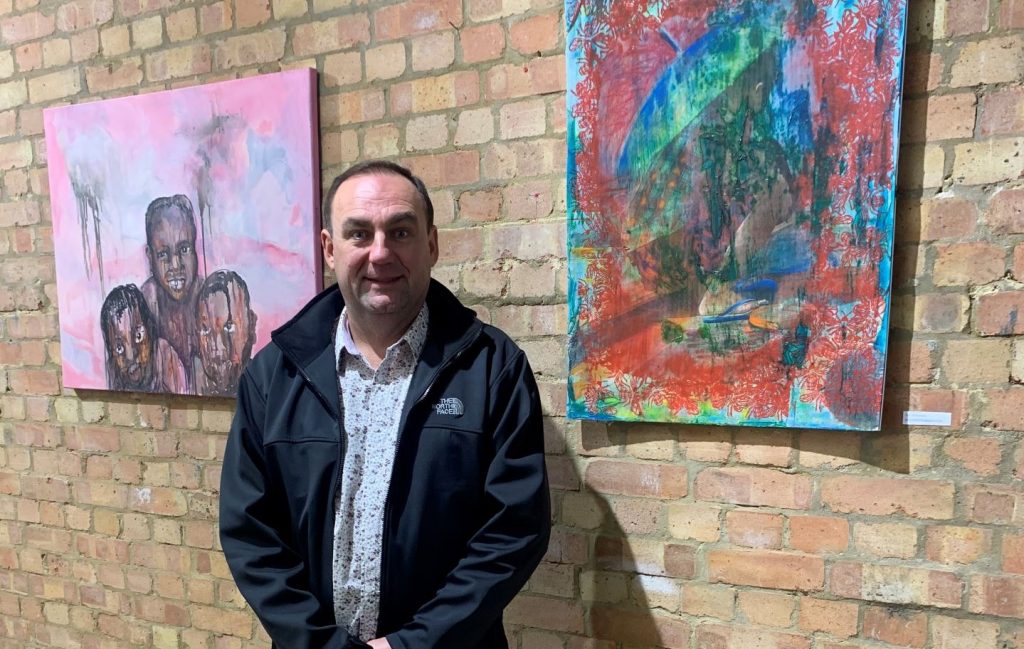24th November 2020

Pav Symanski is one of the Art lecturers at the College but is also very connected to the industry as well. He has a great reputation and is why he has been approached by 123 Art Magazine for an interview.
Below is a sample of his work that was featured and the questions and his answers. For the full article from 123 Art Magazine, click here.

I must say, when I read your bio, I was quite fascinated by your project. Tell me more about “response to your observations” of people you’ve encountered, and how you’ve captured it and transformed into art.
Pav: I have thoroughly enjoyed an exciting, life-changing and broad-ranging research journey during the last 25 years. As a result of my world travels, I had a wealth of resources and unique observations of the dynamics of life across humanity. However, I was oblivious to a universal truth, which reveals a common link across nations, cultures and races. My initial research was concerned with the clarification of my creative intentions and learning to understand the potential and value of my learning process. During reviewing my primary sources and research findings, I noticed reoccurring characteristics across the different data. Therefore, my focus begun to be placed on investigating and questioning the concept on ‘waiting for change’ in a hope for improvement. I recorded numerous people entrapped in poverty, who were suspended in vacuum of detachment, frozen in a bizarre inactivity without any chances for progress, development and achievement. My work is a multi-layered, metaphorical and interpretative portrayal of my observations.
You’ve spent your life travelling and recording human existence. If you could choose one place that was most fascinating, which one would it be, and why?
Pav: It is quite an impossible question to answer. Perhaps the most fundamental research findings and experiences I gathered were from Haiti. The depth of depravity and sheer quantity of pollution and human suffering were simply beyond my comprehension. The emotional impact of this was translated into a range of expressive portraits of the locals, who attempted to survive against all odds and persevere with their routine lives undaunted.

How do you keep your ideas fresh?
Pav: The things I frequently see are so dramatic and intense that it would be physically impossible not to be inspired and feel compelled to respond to them. I try to keep in touch with people I record during my research expeditions.
What is a day of working like in your studio? Do you have any rituals that help you get motivated or in “the zone”?
Pav: There is no routine nor ritual. My painting process is quite spontaneous and random, based on using many contradictory layers and supporting my work with printing, glazing and distressing.
What’s the most challenging part of your artistic process? And how do you overcome it?
Pav: Establishing the concept for each piece in relation to the experience and rapport with the model. This makes my work very personal and subjected to several ethical considerations. Afterall, I paint real people with challenging lives and full of feelings and emotions.
What’s the coolest art tip you’ve ever received?
Pav: Stop painting and do something useful!

What advice would you give to upcoming artists, how to think out-of-the-box and grow?
Pav: Devote yourself to authentic research and formulate a meaningful creative intention before making any commitments to one particular subject or idea.
What’s next on the horizon for you?
Pav: I am travelling back to Africa in December to continue with my project in Tanzania. I started with an extensive body of work there during the summer, and feel that I need to learn more to discuss the changing world and status quo, in the context of the pandemic.
To read more of 123 Art Magazine’s piece on Pav, click here.
To learn more about Pav and his art, please check:
https://hypnoticrepetition.com/
https://pavszymanski.myportfolio.com/
https://www.youtube.com/channel/UCOq7lHQlrOnKozGz95Hq2CA?view_as=subscribehttps:






